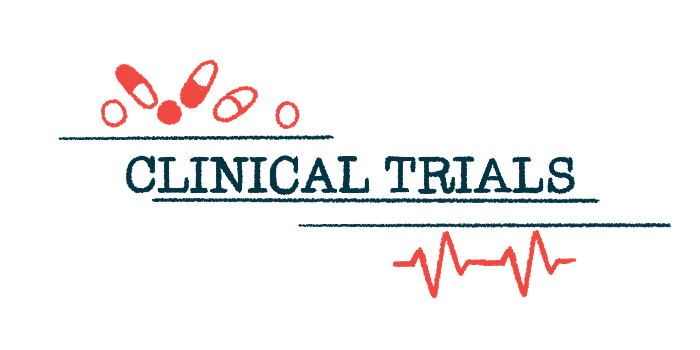Exa-cel Continues to Prevent VOCs in Sickle Cell Patients: New Trial Data
Written by |

Exagamglogene autotemcel (exa-cel), an experimental gene-editing cell therapy, increased fetal hemoglobin levels and prevented vaso-occlusive crises (VOCs) in 31 people with severe sickle cell disease (SCD), according to new data from the CLIMB-SCD-121 trial.
Vertex Pharmaceuticals and CRISPR Therapeutics, which are jointly developing the therapy, recently launched VX21-CTX001-151, a Phase 3 trial (NCT05329649) to test exa-cel in up to 12 children with severe SCD, ages 2–11, who fail to respond to or are unable to tolerate hydroxyurea. A similar Phase 3 trial, called VX21-CTX001-141 (NCT05356195), is also underway in children with transfusion-dependent beta-thalassemia (TDT).
These new data and positive findings from the CLIMB-Thal-111 study (NCT03655678), which is evaluating the therapy in people with TDT, were presented at the 2022 European Hematology Association (EHA) Congress, held June 9–12.
“I have seen first-hand the impact that this investigational therapy has had on patients in these clinical trials and continue to be impressed by the totality of the data,” Franco Locatelli, MD, PhD, professor of pediatrics at the Sapienza University of Rome, said in a press release.
“Given the urgency for highly effective and curative therapies for patients with [hemoglobin-related diseases], I am excited to be part of the team working towards the goal of addressing this unmet need,” said Locatelli, who is also the director of the department of pediatric hematology and oncology at Bambino Gesù Children’s Hospital.
Exa-cel, formerly known as CTX001, is based on the CRISPR-Cas9 gene-editing tool. The therapy is designed to modify a patient’s blood cell precursors to produce high levels of fetal hemoglobin (HbF) — a version of hemoglobin found in newborn red blood cells that transports oxygen more efficiently than its adult equivalent (Hb). The modified cells are then given back to the patient in the form of a stem cell transplant.
By increasing HbF, exa-cel seeks to lower VOCs, painful episodes caused by sickled red blood cells blocking blood vessels.
The Phase 2/3 CLIMB-SCD-121 study (NCT03745287), now fully enrolled, is testing the effectiveness and safety of a single dose of exa-cel in people with severe SCD, ages 12–35, defined as having at least two severe VOCs per year in the two years before enrollment.
The trial protocol was changed to include data on the primary endpoints needed for regulatory submission after discussions with regulators. The primary outcome measure has been updated from the proportion of participants with an increase in HbF of 20% or more to the proportion of participants who have not had any severe VOCs for at least a year after dosing.
Previous results from the first seven patients who were followed between five to 22 months (nearly two years) showed that exa-cel was generally safe and led to rapid and sustained increases in HbF, while eliminating VOCs.
In a late-breaking oral presentation titled, “Efficacy and Safety of a Single Dose of CTX001 For Transfusion-Dependent Βeta-Thalassemia and Severe Sickle Cell Disease,” researchers presented data from 31 patients who were followed from two months to 32.3 months (2.7 years) after treatment.
In the two years before receiving exa-cel, the patients had a mean of 3.9 VOCs per year. All of them were free of VOCs. throughout the follow-up.
The mean HbF, as a proportion of total Hb, was higher than 20% after three months, increasing to about 40% at four months post-dosing, which was sustained after that. After three months, the mean total Hb reached higher than 11 grams per deciliter (g/dL), within the low end of the normal range.
SCD patients with one or more years of follow-up had stable proportions of modified stem cells in their bone marrow and blood cell precursors in their bloodstream.
“By reactivating a naturally occurring developmental process, exa-cel restores fetal hemoglobin production and thereby can ameliorate the course of these diseases,” said Haydar Frangoul, MD, medical director of Pediatric Hematology and Oncology at Sarah Cannon Research Institute, HCA Healthcare’s The Children’s Hospital at TriStar Centennial Medical Center.
“The remarkable results based on this approach give me great optimism and confidence in the potential of this treatment for patients,” Frangoul said.
The therapy’s safety profile was consistent with myeloablative chemotherapy given before the stem cell transplant — a strategy that eliminates blood cell precursors in the bone marrow to make room for the transplanted cells to rebuild a healthy bone marrow. Among the 31 SCD patients, no treatment-related serious side effects were reported.
Similar positive responses were reported for the 44 TDT patients who were followed for 1.2–37.2 months (slightly more than three years) in the CLIMB-Thal-111 trial. Exa-cel led to a sustained increase in HbF, and 42 participants remained transfusion-free.
“These robust data from 75 patients, of which 33 have one year or more of follow-up after exa-cel infusion, further demonstrate the potential of this investigational therapy as a one-time functional cure for patients with transfusion-dependent beta thalassemia or severe sickle cell disease,” Carmen Bozic, MD, executive vice president and chief medical officer at Vertex, said.
Participants from both CLIMB-SCD-121 and CLIMB-Thal-111 studies will have the chance to enter the long-term follow-up study CLIMB-131 (NCT04208529) after completing their initial trial.






